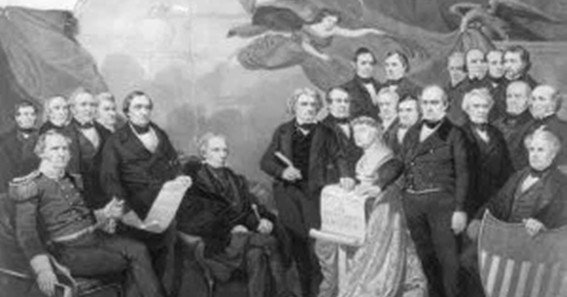Understanding the Georgia Platform
In the wake of the Compromise of 1850, tensions between pro-slavery and anti-slavery factions in the United States reached a boiling point. To address these concerns, Georgia convened a state convention in Milledgeville in December 1850. The result was the Georgia Platform, a document that aimed to clarify the state’s position on the Compromise and the broader issue of slavery.
Purpose of the Georgia Platform
The primary objectives of the Georgia Platform were:
-
Conditional Acceptance of the Compromise: Georgia agreed to accept the measures of the Compromise of 1850, provided that the North upheld its obligations, particularly concerning the enforcement of the Fugitive Slave Act.
-
Warning Against Future Violations: The Platform warned that any future attempts by Congress to interfere with slavery in the District of Columbia or the territories, or to weaken the Fugitive Slave Law, would be met with resistance, potentially leading to secession.
-
Promotion of Unionist Sentiment: By taking a moderate stance, the Georgia Platform sought to quell secessionist fervor within the state and promote unity within the Union.
Key Figures Behind the Platform
The Georgia Platform was largely the work of Charles J. Jenkins, a prominent Whig lawyer and state legislator. Other influential figures included Alexander Stephens, Robert Toombs, and Howell Cobb, who played significant roles in drafting and promoting the document.
Impact and Legacy
The Georgia Platform had far-reaching effects:
-
Influence on Other States: Georgia’s moderate stance influenced neighboring states like Alabama and Mississippi to adopt similar positions, temporarily easing sectional tensions.
-
Delay of Secession: By promoting a conditional acceptance of the Compromise, the Platform delayed the secession of Southern states, buying time before the eventual outbreak of the Civil War.
-
Political Realignment: The Platform contributed to the formation of the Constitutional Union Party, which aimed to preserve the Union and uphold the Constitution without taking a firm stance on slavery.
Frequently Asked Questions
Q1: What was the Georgia Platform?
A1: The Georgia Platform was a statement adopted in December 1850, expressing Georgia’s conditional acceptance of the Compromise of 1850 and warning against future federal encroachments on Southern rights.
Q2: Why was the Georgia Platform significant?
A2: It played a crucial role in delaying secessionist movements in the South by promoting a moderate stance that balanced Union loyalty with the defense of slavery.
Q3: Who authored the Georgia Platform?
A3: Charles J. Jenkins was the primary author, with significant contributions from Alexander Stephens, Robert Toombs, and Howell Cobb.
Q4: How did the Georgia Platform affect national politics?
A4: It influenced other Southern states to adopt similar positions, temporarily easing sectional tensions and contributing to the formation of the Constitutional Union Party.
Q5: Did the Georgia Platform prevent the Civil War?
A5: While it delayed secession and temporarily eased tensions, the underlying issues remained unresolved, eventually leading to the Civil War.
The Georgia Platform served as a critical document in the antebellum period, reflecting Georgia’s attempt to navigate the turbulent waters between Union preservation and the defense of Southern interests. Its legacy underscores the complexities and challenges of maintaining national unity in the face of deep-seated regional differences.










